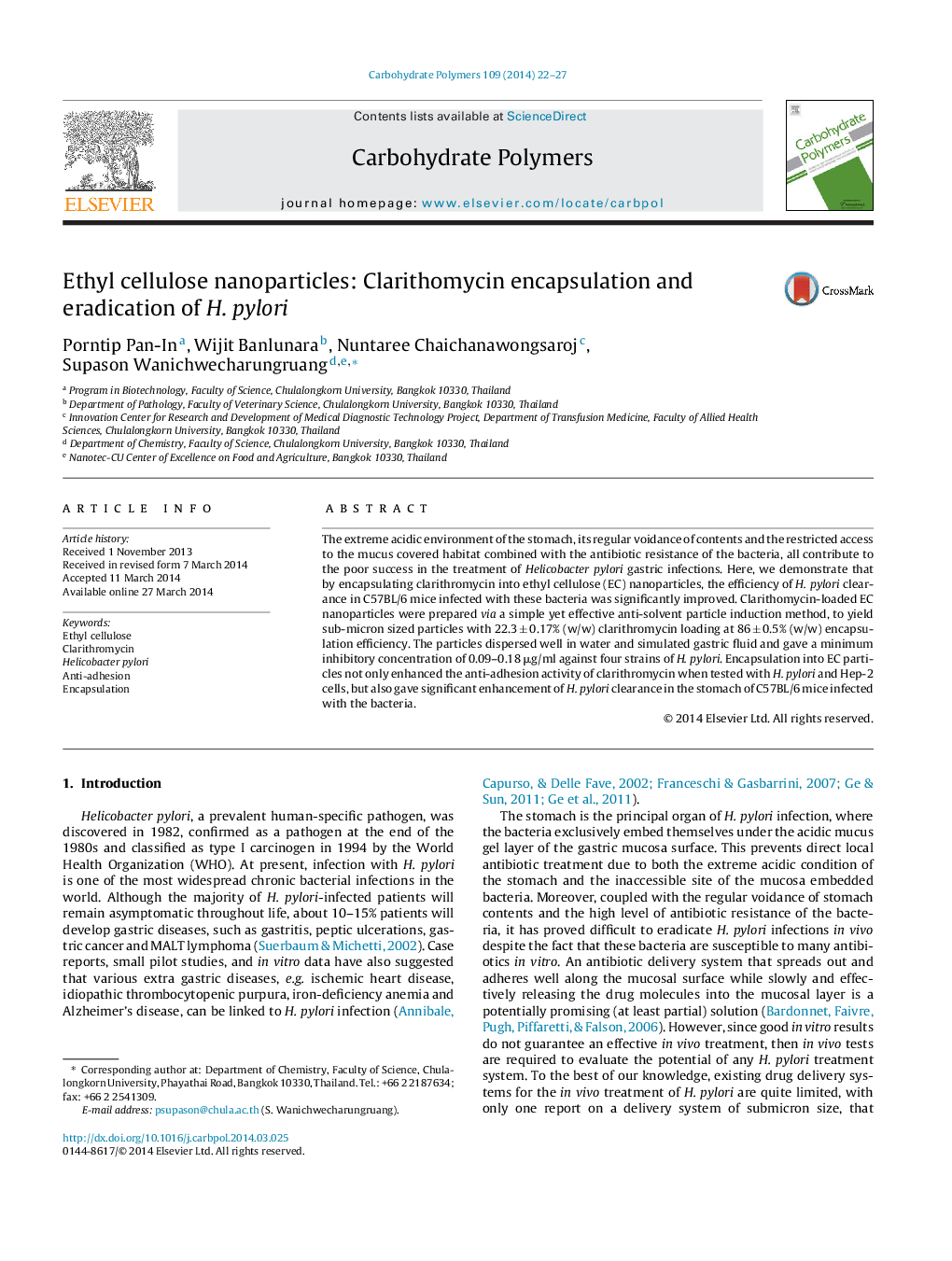| Article ID | Journal | Published Year | Pages | File Type |
|---|---|---|---|---|
| 1383491 | Carbohydrate Polymers | 2014 | 6 Pages |
•Encapsulation of clarithomycin with ethylcellulose gave 223 ± 50 nm (dry size) particles with 22.3 ± 0.17% drug loading.•The particles gave a minimum inhibitory concentration of 0.09–0.18 μg/ml against four strains of H. pylori.•Encapsulated clarithromycin showed increased anti-adhesion activity when tested with H. pylori and Hep-2 cells.•Encapsulated clarithromycin showed increased H. pylori clearance in the stomach of C57BL/6 mice infected with the bacteria.
The extreme acidic environment of the stomach, its regular voidance of contents and the restricted access to the mucus covered habitat combined with the antibiotic resistance of the bacteria, all contribute to the poor success in the treatment of Helicobacter pylori gastric infections. Here, we demonstrate that by encapsulating clarithromycin into ethyl cellulose (EC) nanoparticles, the efficiency of H. pylori clearance in C57BL/6 mice infected with these bacteria was significantly improved. Clarithomycin-loaded EC nanoparticles were prepared via a simple yet effective anti-solvent particle induction method, to yield sub-micron sized particles with 22.3 ± 0.17% (w/w) clarithromycin loading at 86 ± 0.5% (w/w) encapsulation efficiency. The particles dispersed well in water and simulated gastric fluid and gave a minimum inhibitory concentration of 0.09–0.18 μg/ml against four strains of H. pylori. Encapsulation into EC particles not only enhanced the anti-adhesion activity of clarithromycin when tested with H. pylori and Hep-2 cells, but also gave significant enhancement of H. pylori clearance in the stomach of C57BL/6 mice infected with the bacteria.
